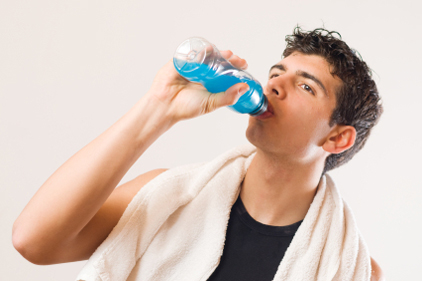How can the food industry respond? Besides their own corporate efforts, many manufacturers (and others) have joined with organizations such as the Partnership for a Healthier America (PHA) and the Let's Move campaign. Just within the past week, manufacturers Dannon, Del Monte and Kwik Trip (a gas station/convenience store chain) joined the cause.
Operating across a larger national scale, these public-private groups want to make healthier foods both more affordable and accessible to families and children. Likewise, these partners are encouraging consumers -- young and old -- to find opportunities for physical activity before, during and after school (for kids and students) as well as the workplace (for adults).
In 2013 alone, PHA and its more than 60 private sector partners reported:
- More than 45 million individuals, including more than 5 million kids, have been touched by PHA partner commitments;
- They have more than doubled food commitments to identified stores that lacked access to healthy, affordable food. By expanding this program from 141 stores to 372 stores, the partners estimate that their programs are serving more than 3.6 million individuals;
- They have increased by 50% the number of opportunities available for kids to be physically active;
- PHA’s first partner, the Healthy Weight Commitment Foundation, removed more than 6.4 trillion calories from the marketplace, as reported by the Robert Wood Johnson Foundation; and
- They have invested more than $11 million to address nation’s physical inactivity.
The hope is that consumers, young and old, simply will get off the couch. Moreover, PHA’s industry and nutrition partners hope that more people also will combine physical activity with better nutrition. Meanwhile, it’s interesting to turn to the sports nutrition marketplace and examine a new generation of popular ingredients—from amino acids to various bioactive ingredients to carbohydrates to proteins, vitamins and minerals.
Whether designed for professional (or semi-professional) athletes—or just the consumer looking for a boost during a daily run—beverages and bars have long dominated the sports nutrition category. More recently, however, manufacturers also have shifted to chews, gels and even gummies. In every case, these products offer convenience and portion control and they lure serious athletes and casual exercisers alike.
One example involves MET-Rx. In launching its NOS Pumped energy bars, officials said this new energy bar is “designed for every body.” It features whey protein and L-Arginine, the amino acid that also serves as a protein building block. New NOS Pumped bars come in two flavors: Chocolate Mixed Berry and Orange Creamsicle.
Protein certainly has been a trend in and of itself. For its take on a bar product, Cascadian Farm incorporated an organic pea protein derived solely from plants. Two new chewy bar offerings—Peanut Butter Chocolate Chip and Honey Roasted Nut—promise 9g of protein per serving. Meanwhile, Cascadian Farm notes that its offerings offer alternatives to protein bars made with dairy and soy proteins.
"We know consumers are searching for innovative products made with protein from legumes, vegetables and nuts...," explains Scott Lee, marketing director for Cascadian Farm.
Interestingly, a 2012 Hartman Group study (“Increased Interest in Protein”) echoed the point. Not only are consumers looking for more protein but they also are distinguishing between protein sources.
When it launched Clif Mojo Fruit & Nut and Clif Mojo Dark Chocolate, Clif Bar & Co. opted for ingredients such as roasted nuts, chunks of organic dark chocolate and organic wild blueberries. The 70% organic bars come in five flavors, are considered low glycemic and low in calories, and promise to be a good source of fiber. Clif Mojo bars contain no trans fats, no partially hydrogenated oils or high-fructose corn syrup.
Mojo’s launch came just after the debut of Clif Shot, a line of performance drinks. Clif Shot Electrolyte Hydration Drink Mix and Clif Shot Protein Recovery Drink Mix are expressly intended for athletes looking for hydration during activity and a fast-absorbing protein to aid in post-workout recovery.
Clif Bar says the Electrolyte Mix contains 90% organic ingredients and aids “fluid transport, absorption and retention,” while it delivers a 4% multiple-source carbohydrate solution to help “optimize gastric emptying while maintaining carbohydrates’ positive effects on rehydration.” The Protein Recovery Mix features 70% organic ingredients and promises 10g of whey and casein to “help maximize the body’s muscle-building potential and prevent muscle breakdown.”
Got milk? After several years of studies linking chocolate milk to post-workout muscle recovery, manufacturers are capitalizing on that data and growing awareness. One example involves Saputo, which launched Milk2Go Sport, a ready-to-drink, milk-based protein shake to dull hunger and stimulate muscle repair after workouts.
"People are increasingly mindful about their protein intake, but are often pressed for time or unsure about what to consume post-workout to ensure proper recovery. Many products currently on the market contain many undesirable ingredients such as vegetable oils and require considerable time to measure and mix," explains Philippe Duhamel, marketing manager at Saputo Dairy Products Canada G.P. "Milk 2Go Sport was formulated [to be] high in protein with the natural goodness of milk."
Indeed, sometimes tailoring a product for active consumers may as simple as a carefully designed repositioning to capitalize on a product’s natural benefits.



